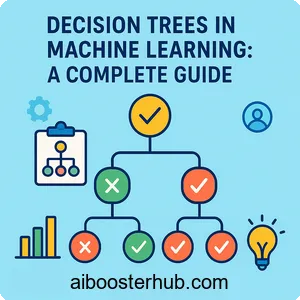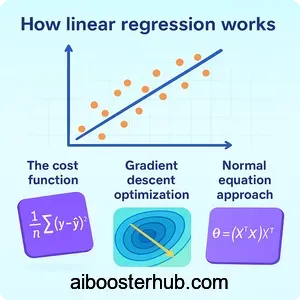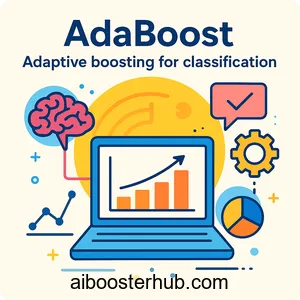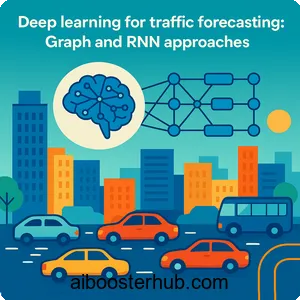Advanced Clustering Methods: Hierarchical and DBSCAN
Clustering algorithms form the backbone of unsupervised machine learning, enabling us to discover hidden patterns and group similar data points without predefined labels. While K-means clustering remains popular for its simplicity, many real-world datasets require more sophisticated approaches. This article explores advanced clustering methods, focusing on hierarchical clustering, DBSCAN clustering, and related techniques that excel where traditional methods fall short.
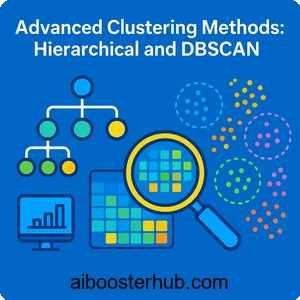
Understanding these clustering algorithms is essential for data scientists and machine learning practitioners who work with complex datasets. Whether you’re analyzing customer behavior, identifying anomalies in network traffic, or segmenting images, choosing the right clustering technique can dramatically impact your results.
Content
Toggle1. Understanding hierarchical clustering
Hierarchical clustering represents a family of clustering algorithms that build a hierarchy of clusters, creating a tree-like structure called a dendrogram. Unlike partition-based methods like K-means, hierarchical clustering doesn’t require you to specify the number of clusters upfront, making it particularly valuable for exploratory data analysis.
What makes hierarchical clustering unique
The fundamental strength of hierarchical clustering lies in its ability to reveal relationships at multiple scales simultaneously. Instead of producing a single partitioning of your data, it creates a complete hierarchy that you can cut at different levels to obtain different numbers of clusters. This flexibility proves invaluable when the optimal number of clusters isn’t known in advance.
There are two main approaches to hierarchical clustering: agglomerative (bottom-up) and divisive (top-down). Agglomerative clustering starts with each data point as its own cluster and progressively merges the closest pairs until all points belong to a single cluster. Divisive clustering works in reverse, starting with all points in one cluster and recursively splitting them. In practice, agglomerative clustering dominates due to its computational efficiency and straightforward implementation.
The mathematics behind hierarchical clustering
At its core, hierarchical clustering relies on two key components: a distance metric and a linkage criterion. The distance metric measures dissimilarity between individual data points, while the linkage criterion determines how to measure distance between clusters containing multiple points.
Common distance metrics include Euclidean distance:
$$ d(\mathbf{x}, \mathbf{y}) = \sqrt{\sum_{i=1}^{n} (x_i – y_i)^2} $$
Manhattan distance:
$$ d(\mathbf{x}, \mathbf{y}) = \sum_{i=1}^{n} |x_i – y_i| $$
And cosine similarity, often converted to a distance measure.
The cluster linkage criterion defines how we measure the distance between two clusters. The most common linkage methods include:
Single linkage measures the minimum distance between any two points in different clusters:
$$ d(C_i, C_j) = \min_{\mathbf{x} \in C_i, \mathbf{y} \in C_j} d(\mathbf{x}, \mathbf{y}) $$
Complete linkage uses the maximum distance:
$$ d(C_i, C_j) = \max_{\mathbf{x} \in C_i, \mathbf{y} \in C_j} d(\mathbf{x}, \mathbf{y}) $$
Average linkage computes the average distance between all pairs:
$$ d(C_i, C_j) = \frac{1}{|C_i| \cdot |C_j|} \sum_{\mathbf{x} \in C_i} \sum_{\mathbf{y} \in C_j} d(\mathbf{x}, \mathbf{y}) $$
Ward’s linkage minimizes the variance within clusters and tends to create more compact, evenly-sized clusters.
Implementing agglomerativeclustering with sklearn
The scikit-learn library provides an intuitive interface for hierarchical clustering through the AgglomerativeClustering class. Let’s explore a practical example using synthetic data:
import numpy as np
import matplotlib.pyplot as plt
from sklearn.cluster import AgglomerativeClustering
from sklearn.datasets import make_blobs
from scipy.cluster.hierarchy import dendrogram, linkage
# Generate synthetic data
X, y_true = make_blobs(n_samples=150, centers=3,
n_features=2, random_state=42)
# Perform agglomerative clustering with different linkages
linkages = ['ward', 'complete', 'average', 'single']
fig, axes = plt.subplots(2, 2, figsize=(12, 10))
for idx, link in enumerate(linkages):
# Fit the model
agg_cluster = AgglomerativeClustering(
n_clusters=3,
linkage=link
)
labels = agg_cluster.fit_predict(X)
# Plot results
ax = axes[idx // 2, idx % 2]
ax.scatter(X[:, 0], X[:, 1], c=labels, cmap='viridis')
ax.set_title(f'{link.capitalize()} Linkage')
ax.set_xlabel('Feature 1')
ax.set_ylabel('Feature 2')
plt.tight_layout()
plt.show()
Creating and interpreting dendrograms
A dendrogram visualizes the hierarchical relationship between clusters, showing how individual data points merge into larger groups. The height at which two clusters merge indicates their dissimilarity—higher merges represent more dissimilar clusters.
from scipy.cluster.hierarchy import dendrogram, linkage
# Create linkage matrix
Z = linkage(X, method='ward')
# Plot dendrogram
plt.figure(figsize=(12, 6))
dendrogram(Z, truncate_mode='lastp', p=30)
plt.title('Hierarchical Clustering Dendrogram')
plt.xlabel('Cluster Size')
plt.ylabel('Distance')
plt.show()
# Cut the dendrogram at a specific height
from scipy.cluster.hierarchy import fcluster
clusters = fcluster(Z, t=15, criterion='distance')
The dendrogram allows you to determine the optimal number of clusters by identifying where significant jumps in merge distance occur. This visual approach complements quantitative methods like the elbow method or silhouette analysis.
2. Density based clustering with DBSCAN
DBSCAN (Density-Based Spatial Clustering of Applications with Noise) represents a paradigm shift in clustering methodology. Unlike hierarchical clustering or K-means, DBSCAN identifies clusters based on density—regions where data points are packed closely together—and automatically identifies outliers as noise.
Core concepts of DBSCAN clustering
DBSCAN operates on two key parameters: epsilon ((\varepsilon)) and minimum points (MinPts). The epsilon parameter defines the radius of the neighborhood around each point, while MinPts specifies the minimum number of points required to form a dense region.
DBSCAN classifies each point into one of three categories:
Core points have at least MinPts neighbors within epsilon distance. These points sit in the heart of clusters.
Border points fall within the epsilon neighborhood of a core point but don’t have enough neighbors to be core points themselves.
Noise points are neither core nor border points—they’re isolated outliers that don’t belong to any cluster.
The algorithm connects core points that are within epsilon distance of each other, forming density-connected regions that become clusters. This approach allows DBSCAN to discover clusters of arbitrary shapes, unlike K-means which assumes spherical clusters.
Mathematical foundation of density based clustering
DBSCAN defines clusters through the concepts of density-reachability and density-connectivity. A point \(q\) is directly density-reachable from point \(p\) if:
$$ d(p, q) \leq \varepsilon \text{ and } |N_\varepsilon(p)| \geq \text{MinPts} $$
where \(N_\varepsilon(p)\) represents the epsilon-neighborhood of point \(p\):
$$ N_\varepsilon(p) = {q \in D \mid d(p, q) \leq \varepsilon} $$
A point \(q\) is density-reachable from \(p\) if there exists a chain of points \(p_1, p_2, …, p_n\) where \(p_1 = p\) and \(p_n = q\), and each \(p_{i+1}\) is directly density-reachable from \(p_i\).
Two points \(p\) and (q) are density-connected if there exists a point \(o\) such that both \(p\) and \(q\) are density-reachable from \(o\). A cluster is then defined as a maximal set of density-connected points.
Implementing DBSCAN with sklearn clustering
Scikit-learn’s implementation of DBSCAN makes it straightforward to apply density-based clustering to your data:
from sklearn.cluster import DBSCAN
from sklearn.preprocessing import StandardScaler
from sklearn.datasets import make_moons
# Generate non-linear data (half-moons)
X, y_true = make_moons(n_samples=300, noise=0.1, random_state=42)
# Standardize features (important for distance-based algorithms)
scaler = StandardScaler()
X_scaled = scaler.fit_transform(X)
# Apply DBSCAN
dbscan = DBSCAN(eps=0.3, min_samples=5)
labels = dbscan.fit_predict(X_scaled)
# Visualize results
plt.figure(figsize=(10, 5))
plt.subplot(121)
plt.scatter(X[:, 0], X[:, 1], c=y_true, cmap='viridis')
plt.title('True Labels')
plt.subplot(122)
plt.scatter(X[:, 0], X[:, 1], c=labels, cmap='viridis')
plt.title(f'DBSCAN Clustering (clusters: {len(set(labels)) - 1})')
plt.tight_layout()
plt.show()
# Identify noise points
n_noise = list(labels).count(-1)
print(f"Number of noise points: {n_noise}")
print(f"Number of clusters: {len(set(labels)) - (1 if -1 in labels else 0)}")
Choosing optimal parameters for DBSCAN
Selecting appropriate values for epsilon and MinPts critically affects DBSCAN’s performance. A common heuristic uses the k-distance graph to determine epsilon:
from sklearn.neighbors import NearestNeighbors
# Calculate k-nearest neighbors distances
k = 5 # typically set to MinPts
neighbors = NearestNeighbors(n_neighbors=k)
neighbors.fit(X_scaled)
distances, indices = neighbors.kneighbors(X_scaled)
# Sort and plot k-distances
distances = np.sort(distances[:, k-1], axis=0)
plt.figure(figsize=(10, 5))
plt.plot(distances)
plt.xlabel('Points sorted by distance')
plt.ylabel(f'{k}-th nearest neighbor distance')
plt.title('K-distance Graph for Epsilon Selection')
plt.grid(True)
plt.show()
# The "elbow" in this curve suggests a good epsilon value
For MinPts, a rule of thumb suggests using \(\text{MinPts} \geq D + 1\) where \(D\) is the dimensionality of your data. For higher-dimensional data, larger MinPts values help reduce noise sensitivity.
3. Comparing clustering algorithms in practice
Understanding when to use each clustering method requires recognizing their strengths and limitations. Let’s examine how hierarchical clustering, DBSCAN, and K-means perform across different scenarios.
Strengths and weaknesses
Hierarchical clustering excels at revealing nested cluster structures and doesn’t require specifying the number of clusters in advance. The dendrogram provides invaluable insights into data structure at multiple scales. However, it suffers from high computational complexity—\(O(n^3)\) for basic implementations—making it impractical for very large datasets. Once a merge occurs, it cannot be undone, and the algorithm is sensitive to outliers, particularly with single linkage.
DBSCAN clustering shines in scenarios with non-spherical clusters and varying densities. Its ability to identify outliers as noise makes it robust for anomaly detection applications. DBSCAN doesn’t assume any particular cluster shape and doesn’t require pre-specifying the number of clusters. However, it struggles with clusters of varying densities and high-dimensional data due to the “curse of dimensionality.” Parameter selection can be challenging, and performance degrades significantly in very high-dimensional spaces.
K-means (for comparison) is computationally efficient and scales well to large datasets with \(O(nkdi)\) complexity. It works well for spherical, evenly-sized clusters but struggles with complex shapes and requires knowing the number of clusters beforehand.
Real-world application scenarios
Let’s demonstrate these differences with synthetic datasets representing common real-world patterns:
from sklearn.datasets import make_circles, make_moons, make_blobs
from sklearn.cluster import KMeans, AgglomerativeClustering, DBSCAN
from sklearn.preprocessing import StandardScaler
# Create different dataset types
datasets = [
make_circles(n_samples=300, noise=0.05, factor=0.5, random_state=42),
make_moons(n_samples=300, noise=0.08, random_state=42),
make_blobs(n_samples=300, centers=3, random_state=42)
]
dataset_names = ['Concentric Circles', 'Half Moons', 'Blobs']
# Clustering algorithms
algorithms = [
('K-Means', KMeans(n_clusters=2, random_state=42)),
('Hierarchical', AgglomerativeClustering(n_clusters=2)),
('DBSCAN', DBSCAN(eps=0.3, min_samples=10))
]
# Plot results
fig, axes = plt.subplots(3, 3, figsize=(15, 12))
for i, (X, y) in enumerate(datasets):
X = StandardScaler().fit_transform(X)
for j, (name, algorithm) in enumerate(algorithms):
labels = algorithm.fit_predict(X)
axes[i, j].scatter(X[:, 0], X[:, 1], c=labels, cmap='viridis', s=30)
axes[i, j].set_title(f'{dataset_names[i]} - {name}')
if i == 2:
axes[i, j].set_xlabel('Feature 1')
if j == 0:
axes[i, j].set_ylabel('Feature 2')
plt.tight_layout()
plt.show()
This comparison reveals that DBSCAN excels with non-convex shapes like circles and moons, while hierarchical clustering provides reasonable results across all scenarios. K-means performs best only on the blob dataset with its naturally spherical clusters.
Performance considerations
Computational complexity varies significantly between clustering algorithms:
- Agglomerative clustering: \(O(n^2 \log n)\) with efficient implementations, \(O(n^3)\) in worst case
- DBSCAN: \(O(n \log n)\) with spatial indexing structures like KD-trees, \(O(n^2)\) without
- K-means: \(O(nkdi)\) where \(n\) is sample size, \(k\) is clusters, \(d\) is dimensions, \(i\) is iterations
For datasets with thousands of points, DBSCAN with proper indexing often provides the best balance between speed and cluster quality. Hierarchical clustering becomes prohibitive beyond tens of thousands of points without approximation techniques.
4. Advanced clustering techniques: spectral clustering
Spectral clustering represents another sophisticated approach to clustering in machine learning, leveraging graph theory and linear algebra to uncover cluster structure. While more computationally intensive than hierarchical clustering or DBSCAN, spectral clustering excels at identifying clusters in data with complex, non-convex structures.
How spectral clustering works
Spectral clustering transforms the clustering problem into a graph partitioning problem. The algorithm constructs a similarity graph where nodes represent data points and edges represent similarities between them. By analyzing the eigenvalues and eigenvectors of the graph’s Laplacian matrix, spectral clustering performs dimensionality reduction that preserves cluster structure, followed by conventional clustering in the reduced space.
The algorithm proceeds in three main steps:
- Construct the similarity graph: Create a weighted graph based on pairwise similarities between data points
- Compute the graph Laplacian: Calculate the Laplacian matrix and its eigenvectors
- Perform clustering: Apply K-means or another algorithm to the eigenvector representation
Mathematical foundations
Given data points \(\mathbf{x}_1, …, \mathbf{x}_n\), spectral clustering constructs an affinity matrix \(W\) where:
$$ W_{ij} = \exp\left(-\frac{||\mathbf{x}_i – \mathbf{x}_j||^2}{2\sigma^2}\right) $$
The graph Laplacian matrix is defined as:
$$ L = D – W $$
where \(D\) is the degree matrix with \(D_{ii} = \sum_j W_{ij}\). The normalized Laplacian is often preferred:
$$ L_{norm} = D^{-1/2} L D^{-1/2} = I – D^{-1/2} W D^{-1/2} $$
The algorithm then computes the first \(k\) eigenvectors of the Laplacian corresponding to the smallest eigenvalues and clusters these eigenvectors using K-means.
Implementing spectral clustering
from sklearn.cluster import SpectralClustering
import numpy as np
import matplotlib.pyplot as plt
# Generate complex data structure
from sklearn.datasets import make_circles
X, y = make_circles(n_samples=500, noise=0.05, factor=0.5, random_state=42)
# Apply spectral clustering
spectral = SpectralClustering(
n_clusters=2,
affinity='rbf', # Radial basis function kernel
gamma=1.0,
random_state=42
)
labels_spectral = spectral.fit_predict(X)
# Compare with other methods
dbscan = DBSCAN(eps=0.2, min_samples=5)
labels_dbscan = dbscan.fit_predict(X)
hierarchical = AgglomerativeClustering(n_clusters=2, linkage='ward')
labels_hierarchical = hierarchical.fit_predict(X)
# Visualize results
fig, axes = plt.subplots(1, 3, figsize=(15, 4))
axes[0].scatter(X[:, 0], X[:, 1], c=labels_spectral, cmap='viridis')
axes[0].set_title('Spectral Clustering')
axes[1].scatter(X[:, 0], X[:, 1], c=labels_dbscan, cmap='viridis')
axes[1].set_title('DBSCAN')
axes[2].scatter(X[:, 0], X[:, 1], c=labels_hierarchical, cmap='viridis')
axes[2].set_title('Hierarchical Clustering')
plt.tight_layout()
plt.show()
Spectral clustering successfully identifies the concentric circles structure where hierarchical clustering struggles, demonstrating its power for non-convex cluster shapes.
5. Evaluating clustering performance
Unlike supervised learning where we have ground truth labels, evaluating clustering quality poses unique challenges. Several metrics help assess clustering algorithms when ground truth is available, and others work entirely unsupervised.
Internal validation metrics
Internal metrics evaluate clustering quality using only the data and cluster assignments, without external labels.
Silhouette coefficient measures how similar a point is to its own cluster compared to other clusters:
$$ s(i) = \frac{b(i) – a(i)}{\max(a(i), b(i))} $$
where \(a(i)\) is the mean distance to points in the same cluster and \(b(i)\) is the mean distance to points in the nearest cluster. Values range from -1 to 1, with higher values indicating better clustering.
from sklearn.metrics import silhouette_score, silhouette_samples
import matplotlib.pyplot as plt
# Compute silhouette scores for different algorithms
X, _ = make_blobs(n_samples=500, centers=4, random_state=42)
X = StandardScaler().fit_transform(X)
algorithms = {
'K-Means': KMeans(n_clusters=4, random_state=42),
'Hierarchical': AgglomerativeClustering(n_clusters=4),
'DBSCAN': DBSCAN(eps=0.5, min_samples=5)
}
for name, algorithm in algorithms.items():
labels = algorithm.fit_predict(X)
# Remove noise points for DBSCAN
if name == 'DBSCAN':
mask = labels != -1
score = silhouette_score(X[mask], labels[mask])
else:
score = silhouette_score(X, labels)
print(f'{name} Silhouette Score: {score:.3f}')
Davies-Bouldin Index measures the average similarity between each cluster and its most similar cluster:
$$ DB = \frac{1}{k} \sum_{i=1}^{k} \max_{j \neq i} \left(\frac{\sigma_i + \sigma_j}{d(c_i, c_j)}\right) $$
Lower values indicate better clustering.
External validation metrics
When ground truth labels exist (for validation purposes), external metrics compare cluster assignments to true labels:
Adjusted Rand Index (ARI) measures similarity between two clusterings, adjusted for chance:
from sklearn.metrics import adjusted_rand_score, adjusted_mutual_info_score
# Assuming we have true labels for comparison
X, y_true = make_blobs(n_samples=300, centers=3, random_state=42)
X = StandardScaler().fit_transform(X)
algorithms = {
'Hierarchical': AgglomerativeClustering(n_clusters=3),
'DBSCAN': DBSCAN(eps=0.5, min_samples=5),
'Spectral': SpectralClustering(n_clusters=3, random_state=42)
}
for name, algorithm in algorithms.items():
labels_pred = algorithm.fit_predict(X)
ari = adjusted_rand_score(y_true, labels_pred)
ami = adjusted_mutual_info_score(y_true, labels_pred)
print(f'{name}:')
print(f' ARI: {ari:.3f}')
print(f' AMI: {ami:.3f}')
Adjusted Mutual Information (AMI) measures the mutual information between cluster assignments and true labels, also adjusted for chance.
Choosing the right metric
Different metrics serve different purposes. Silhouette coefficient works well for convex clusters but may mislead for complex shapes. For density-based or hierarchical clustering results with varying cluster densities, consider using multiple metrics together. Always visualize your results when possible—metrics provide quantitative assessment, but human interpretation remains invaluable for understanding cluster quality and meaning.
6. Practical guidelines for choosing clustering algorithms
Selecting the appropriate clustering method requires understanding your data characteristics, computational constraints, and analysis goals. This section provides practical guidance for navigating these decisions.
Decision framework
Start by characterizing your data and requirements:
For well-separated, spherical clusters with known cluster count: K-means often suffices and provides fast, interpretable results.
When cluster count is unknown and you need hierarchical structure: Use hierarchical clustering with agglomerative approach. The dendrogram helps determine appropriate granularity. Ward linkage typically produces balanced clusters, while complete linkage creates more compact clusters.
For arbitrary cluster shapes and automatic noise detection: DBSCAN clustering excels here. It’s particularly valuable for spatial data, anomaly detection, and exploratory analysis where outliers are expected.
For complex, non-convex structures when computational resources allow: Spectral clustering leverages graph theory to uncover intricate patterns that other methods miss.
Data preprocessing considerations
All clustering algorithms in sklearn clustering are distance-based and sensitive to feature scales. Always standardize your features:
from sklearn.preprocessing import StandardScaler
scaler = StandardScaler()
X_scaled = scaler.fit_transform(X)
For hierarchical clustering and DBSCAN, consider dimensionality reduction for high-dimensional data:
from sklearn.decomposition import PCA
# Reduce dimensionality before clustering
pca = PCA(n_components=0.95) # Retain 95% variance
X_reduced = pca.fit_transform(X_scaled)
# Then apply clustering
dbscan = DBSCAN(eps=0.5, min_samples=5)
labels = dbscan.fit_predict(X_reduced)
Combining multiple approaches
Often, the best strategy involves using multiple clustering algorithms to validate and cross-check results:
from sklearn.metrics import adjusted_rand_score
# Apply multiple algorithms
hierarchical_labels = AgglomerativeClustering(n_clusters=3).fit_predict(X)
dbscan_labels = DBSCAN(eps=0.5, min_samples=5).fit_predict(X)
# Check agreement between methods
agreement = adjusted_rand_score(hierarchical_labels, dbscan_labels)
print(f'Agreement between methods: {agreement:.3f}')
# High agreement suggests stable, meaningful clusters
# Low agreement warrants further investigation
Common pitfalls to avoid
Several mistakes frequently undermine clustering analysis:
- Forgetting to scale features: Distance-based algorithms require normalized features
- Ignoring the curse of dimensionality: DBSCAN and hierarchical clustering degrade in high dimensions
- Over-relying on a single metric: Use multiple evaluation approaches
- Forcing a specific cluster count: Let the data guide you, especially with hierarchical clustering and DBSCAN
- Neglecting visualization: Always visualize results, even if using dimensionality reduction first
Production deployment considerations
When deploying clustering algorithms in production systems:
For agglomerativeclustering and hierarchical methods, pre-compute the linkage matrix and use it to assign new points to existing clusters based on nearest centroid or boundary distance.
For DBSCAN, maintain the fitted model and use the fit_predict method for new data batches. Consider retraining periodically as data distributions shift.
For spectral clustering, the computational cost makes it better suited for offline analysis. Use the resulting cluster assignments to train a supervised classifier for production inference.
# Example: Using DBSCAN in a production pipeline
from sklearn.pipeline import Pipeline
from sklearn.preprocessing import StandardScaler
from sklearn.cluster import DBSCAN
# Create pipeline
clustering_pipeline = Pipeline([
('scaler', StandardScaler()),
('cluster', DBSCAN(eps=0.5, min_samples=5))
])
# Fit on training data
clustering_pipeline.fit(X_train)
# Apply to new data
new_labels = clustering_pipeline.named_steps['cluster'].fit_predict(
clustering_pipeline.named_steps['scaler'].transform(X_new)
)
7. Conclusion
Advanced clustering methods like hierarchical clustering, DBSCAN, and spectral clustering provide powerful alternatives to traditional approaches, each excelling in specific scenarios. Hierarchical clustering reveals nested structures through its dendrogram visualization, making it ideal when relationships exist at multiple scales. DBSCAN’s density-based approach handles arbitrary shapes and automatically identifies outliers, proving invaluable for spatial data and anomaly detection. Understanding these clustering algorithms and their mathematical foundations enables you to select the right tool for your specific machine learning challenges.
The field of clustering in machine learning continues to evolve with hybrid approaches and scalable implementations. Success requires not just algorithm selection but careful preprocessing, parameter tuning, and validation using multiple metrics. By mastering these advanced techniques alongside practical implementation skills with sklearn clustering, you’ll be well-equipped to extract meaningful patterns from complex, unlabeled datasets across diverse AI applications.

